Photographer George Rodriguez has chronicled L.A. in all of its glamour and grit
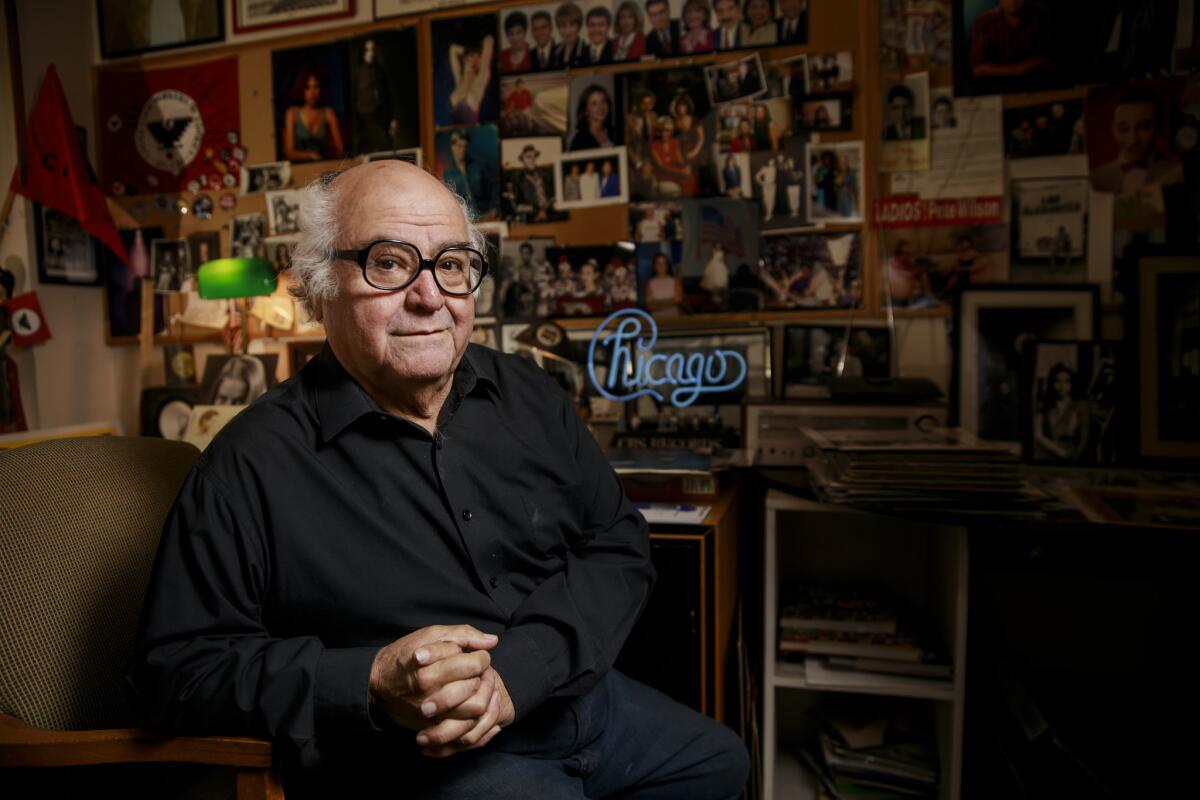
- Share via
George Rodriguez never set out to become a photographer. Photography came to him.
It was 1954. He was at Fremont High School in South Los Angeles, and he needed an elective to meet graduation requirements.
“A friend said, ‘Take photography, it’s easy,’” he recalls, seated in his cluttered downtown Los Angeles studio.
That class set the course of his life. For more than half a century, Rodriguez has made pictures for magazines and record labels and, most importantly, for himself.
He has photographed celebrities — including Jim Morrison playing an early gig at the Whiskey a Go Go in 1966. But he has also covered civil unrest. In 1968, when his day job was managing the photo lab at Columbia Pictures, he’d hop in his car on his lunch hour and take pictures of the student walkouts in East Los Angeles.
“I was the manager,” he says with a grin, “so I could be a little bit late coming back.”
Rodriguez’s work is too vast to fit into a single book. (The photographer estimates he has roughly 40 flat files stuffed with photographs and negatives at his Pico Rivera home.) But a new book, “Double Vision: The Photography of George Rodriguez,” released this month by Hat & Beard Press, synthesizes his eclectic career into a single, manageable volume.
This was no easy task.
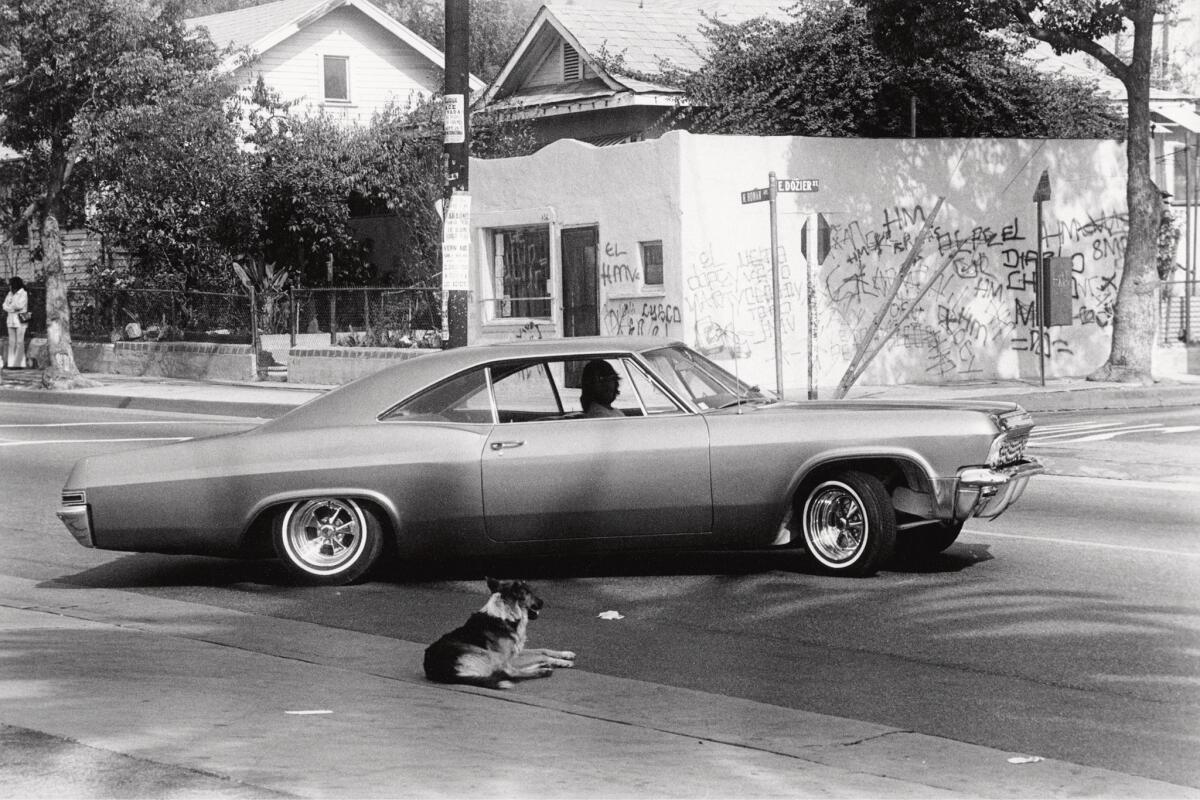
Rodriguez was born in 1937 in Los Angeles to Mexican parents. For much of his young life, the family lived downtown in the back of his father’s shoe repair shop. After they moved to South L.A., he landed in the photo department at Fremont High.
“That school has never really gotten the credit they deserve,” he says. Fremont, he notes, has produced important photographers, including Mark Kauffman, who at 17 became the youngest photographer to shoot a Life magazine cover (of Eleanor Roosevelt), and John Dominis, who captured the iconic image of two athletes raising black-gloved fists at the Olympics in 1968.
Despite the encouragement in school, Rodriguez’s photography career didn’t get off to the most promising start. When he got an after-school job at a photo lab so that he could help out his parents, the supervisor there told him he would never make it in the business. Rodriguez was happy to prove him wrong.
“After graduation, I got a job on a steamship as a ship photographer,” Rodriguez says with a smile. “When I got to Hawaii, I sent my old supervisor a coconut.”
By 1960 he was managing the lab at Columbia — and was capturing an extravagant range of imagery.
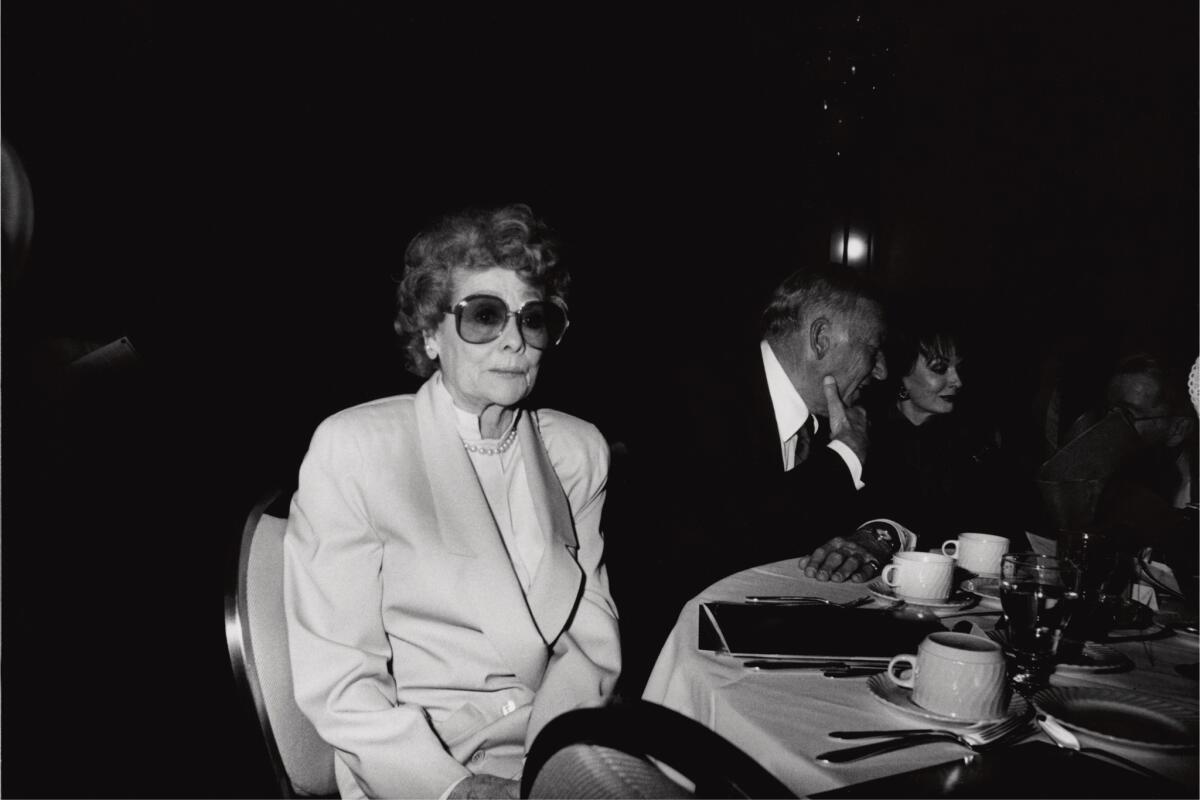
In the book’s introduction, writer and scholar Josh Kun notes that Rodriguez “shot whatever was in front of him, no matter where he was. He wanted the picture more than he wanted the perfect picture.”
Rodriguez snapped Marilyn Monroe and Lucille Ball at Hollywood events. He documented East L.A. streets and the farmworker movement. Plus, there were myriad cover shoots for glossies such as Tiger Beat and Rap Pages for whom he photographed 1970s heartthrob Shaun Cassidy and ’90s rap icon Ice Cube. (On one side of Rodriguez’s studio sits a painted backdrop from an early shoot with N.W.A signed by Dr. Dre and Eazy-E — a piece of hip-hop history.)
The images, however, all add up to one man’s singular view of Los Angeles — and its disparate, barely intersecting worlds.
Of his work, he says humbly, “You do the best you can.”
Working on the book — and a related gallery exhibit opening at the Lodge in East Hollywood on May 26 — has been a trip down memory lane.
“Doing the book, I’ve had those ‘Did that really happen?’ moments,” Rodriguez says. “I remember I would see Frank Zappa at Barney’s Beanery and we’d have a bowl of beans together. That really happened. But when I think about it, it’s like, ‘Did that really happen?’”
Judging by the walls of his studio, it all did. Wedged between images of his own work are snapshots in which Rodriguez appears in the frame, hanging out with Cary Grant or standing proudly next to Cesar Chavez, hands full of camera gear.
“Double Vision” begins to pull together the story of Rodriguez’s varied career.
The book has more than 200 images. The photographer tells us, in his own words, the stories behind seven of them:
Capturing the 1968 ‘Blowouts’
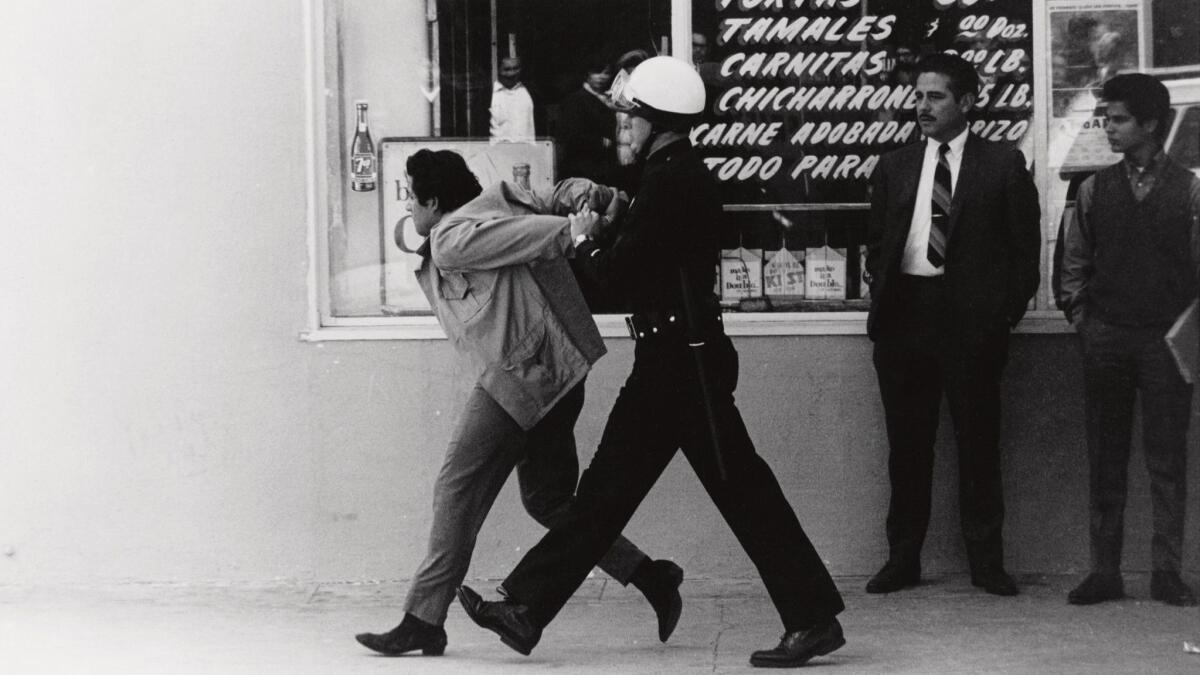
“This photo was taken on 4th Street during the walkouts at Roosevelt. There was a lot of stuff going on and I’m always reminded of that lyric from the Buffalo Springfield song: ‘What a field day for the heat’ [from the single ‘For What It’s Worth’]. That’s what it felt like.
“Kids were getting arrested. They were very young kids — could have been 13, 14, 15 years old. To actually see someone get hit on the head and you can’t do anything about it. I had a lot of respect for the kids. They wanted better schools. It felt a bit hopeless. But I felt tremendous pride for them.”
A young King of Pop
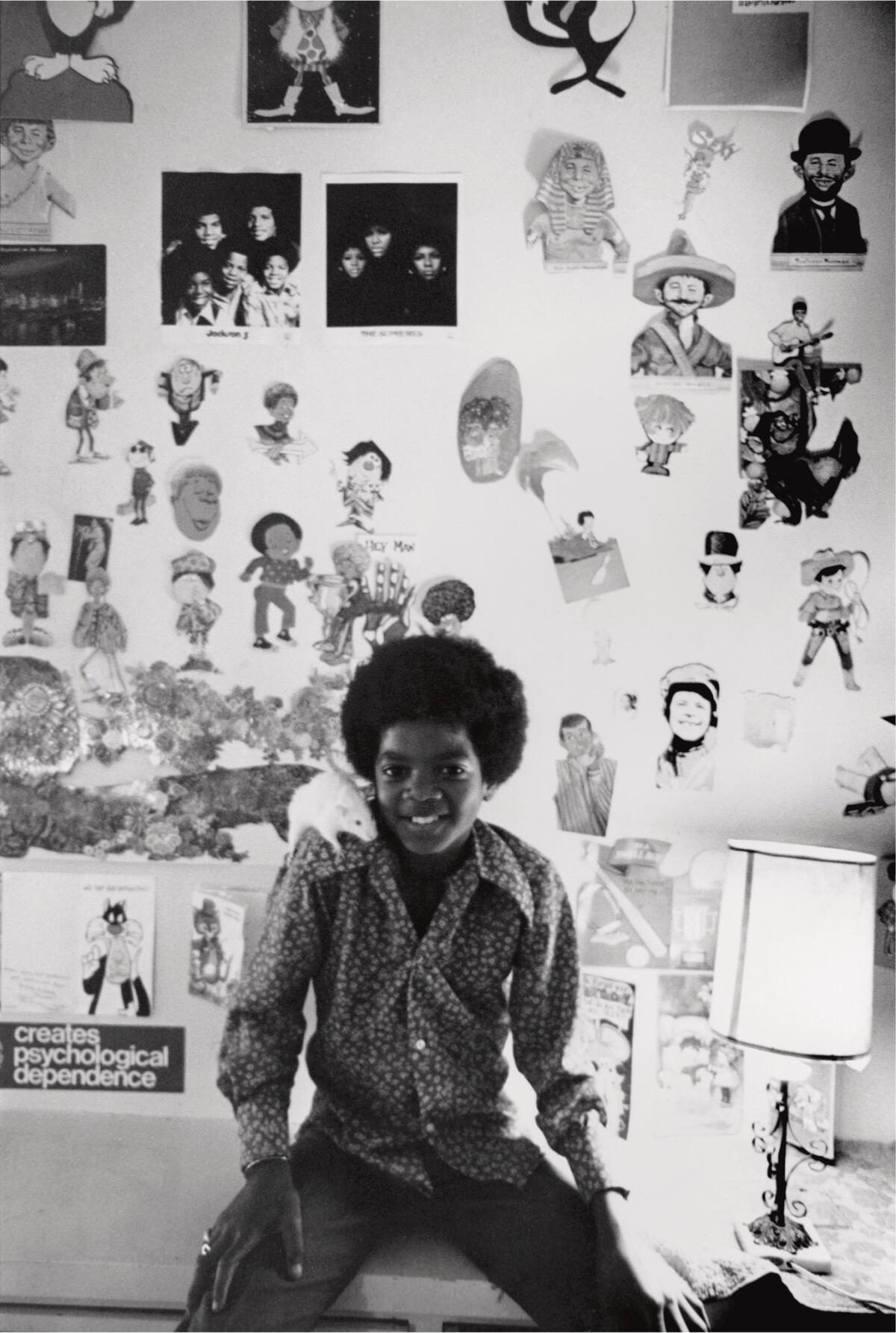
“The first time I saw Michael [Jackson], it was unbelievable. I was there when Diana Ross introduced them at the Forum and it was one of those nights where you see someone perform and you are blown away. You know you’ve seen something special. [The Jackson 5] hadn’t released an album yet, so no one really knew who they were yet.
“At this time, the family had a place in Encino. Michael was a kid — a happy kid. Look at his wall, it’s just kid’s stuff. He was all over the yard. He had a pogo stick he jumped around on. He had these two rats and one was named Ray and the other was named Charles. I spent the day with the whole family. My brother came with me that day. He sometimes came to assist me. When Michael realized he was my brother, he said, ‘Who can beat up who?’”
Faces of the farmworker movement
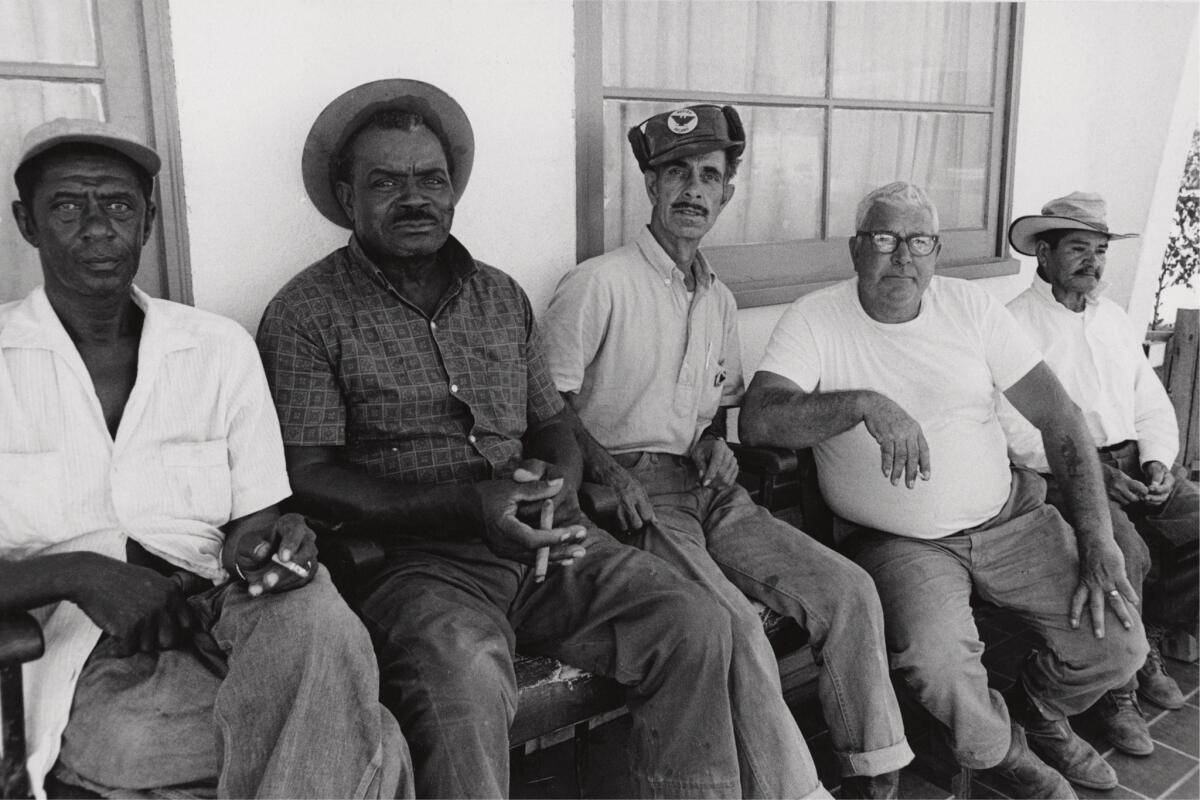
“This was for West Magazine [once published by The Times], for a story about the farmworker movement. This place is called Filipino Hall, in Delano. If you went to picket you went to Filipino Hall. It was like a gymnasium — you slept on the floor. They had a kitchen where they would feed people. This is the porch. These guys were picketers. They were taking a break.
“It was such a mixture of people. There were Mexicanos, African Americans and a lot of Filipinos. The guy towards the right is Anglo. But when they’re working, you can’t tell what they are because they are like mummies. They keep their faces wrapped up because of the dust. As a photojournalist, you want to try to tell the story. This was so hot and dusty and dirty. It’s uncomfortable. And you have to work in it, so you appreciate what they are doing.”
Before the bout
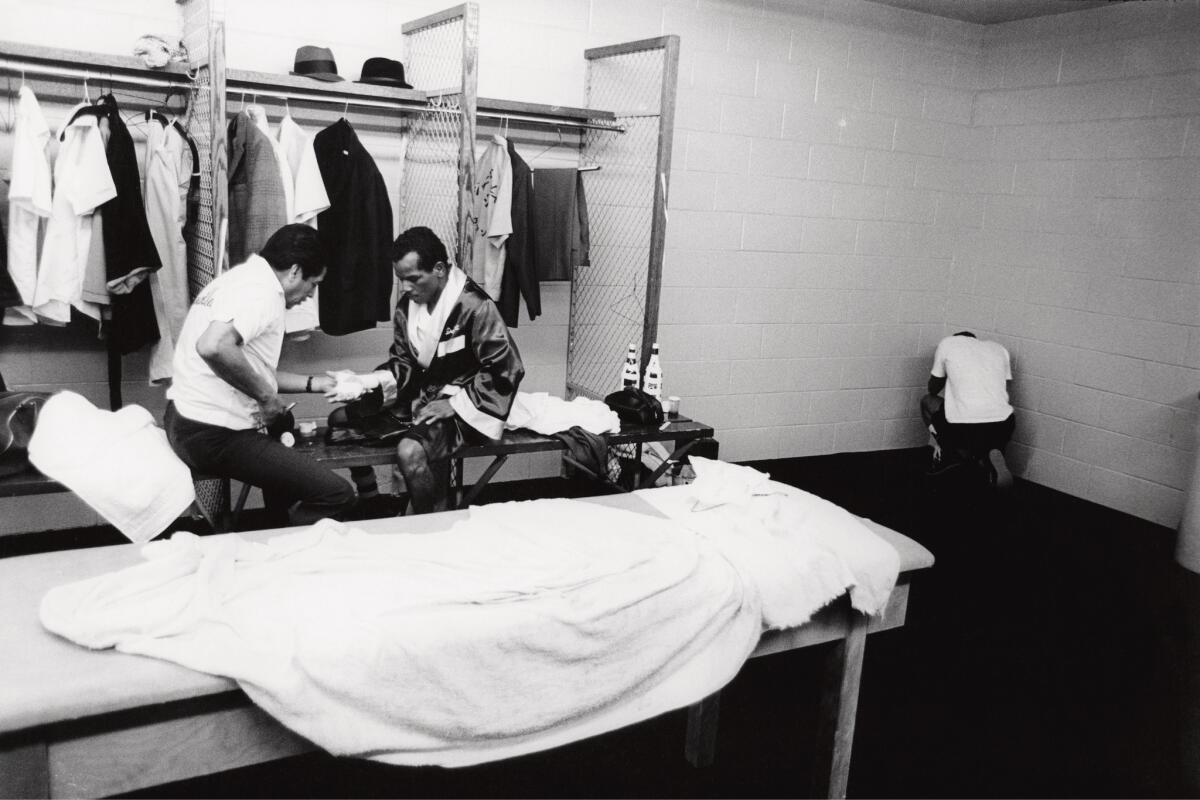
“There is nothing like a fight. But not the fight itself — everything around it. There is nothing more dramatic than fight people. If you follow boxing, you can’t describe that moment when someone goes into the ring. There is nothing like a fight crowd. They are a special, tough bunch.
“This was shot at the Forum. It’s unusual because you have these two boxers [Dwight Hawkins and Ruben Navarro] sharing a dressing room. The guy on the left, his name is Johnny Flores, the trainer. He was a World War II hero. Quite a while later, they converted the old Lincoln Heights jail into a gym and he fell into an elevator shaft and got killed. It was really tragic. Johnny Flores was a real institution.”
N.W.A on the rise
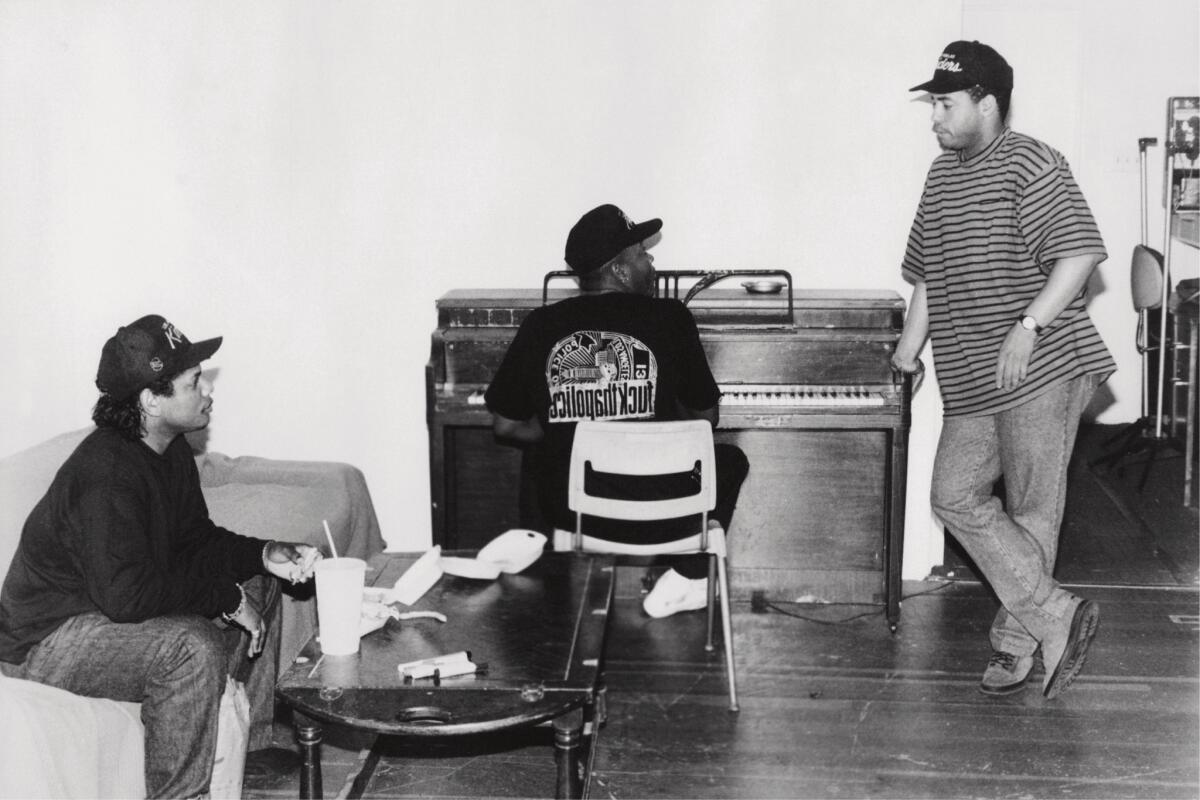
“I sort of knew who N.W.A was when I took this picture. It was in Burbank for a magazine called Yo! I’d rented this studio from a professional dancers’ society. It was a converted church, but it had a theater and a dance rehearsal hall and it had this piano — and both Eazy-E and Dr. Dre sat at the piano and played it really well. The people who ran the space were old school. They knew Donald O’Connor and Lucille Ball, and I’d have these shoots where I’d have Shabba-Doo or the Soul Train dancers or MC Hammer.
“At the shoot with N.W.A, Eazy gave me four cassettes. I still have them. The cassette was ‘Straight Outta Compton.’ I played one on my way home. I could not believe what was on these tapes. I’d never heard hard-core rap. I knew right away this was not going to play on the radio. But what they were talking about, what they were saying about the police — in the 1950s and ’60s in South-Central, the LAPD had carte blanche to do whatever they wanted — that’s what they were rapping about. It was so deep.”
Kids in the neighborhood
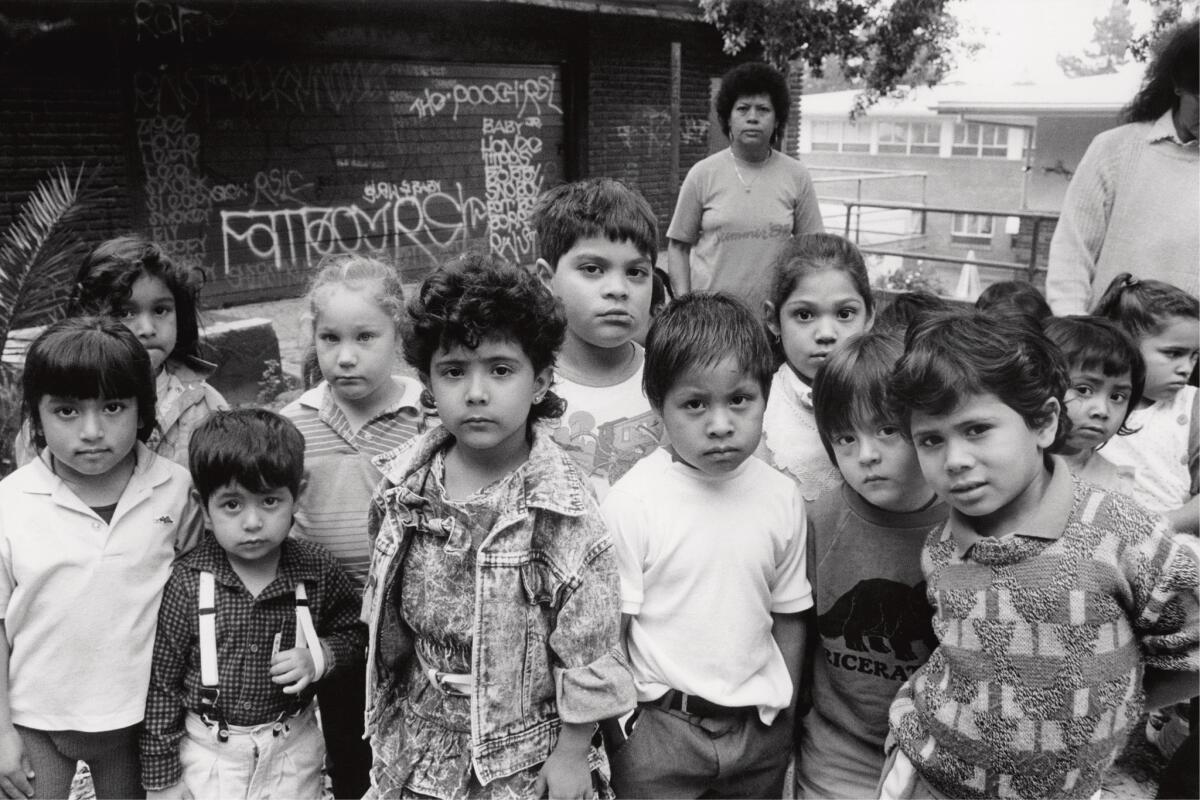
“This was at a daycare center and they needed a brochure for fundraising. I remember I got there early, before the woman who ran the place arrived. I loved the graffiti on the walls. I’ve always been interested not so much in graffiti, but in statements on wall. No matter the quality of it, it’s something that wasn’t supposed to be there, they are going to remove it, so you have to get it right away.
“In this case, I thought, if [the daycare center] is trying to raise money, then the graffiti will add to that. But when the woman that ran the place got there, she said, ‘I hope you didn’t get the graffiti.’ She was really stern about it. [Laughs.] I ended up having to shoot more.”
Everyday people
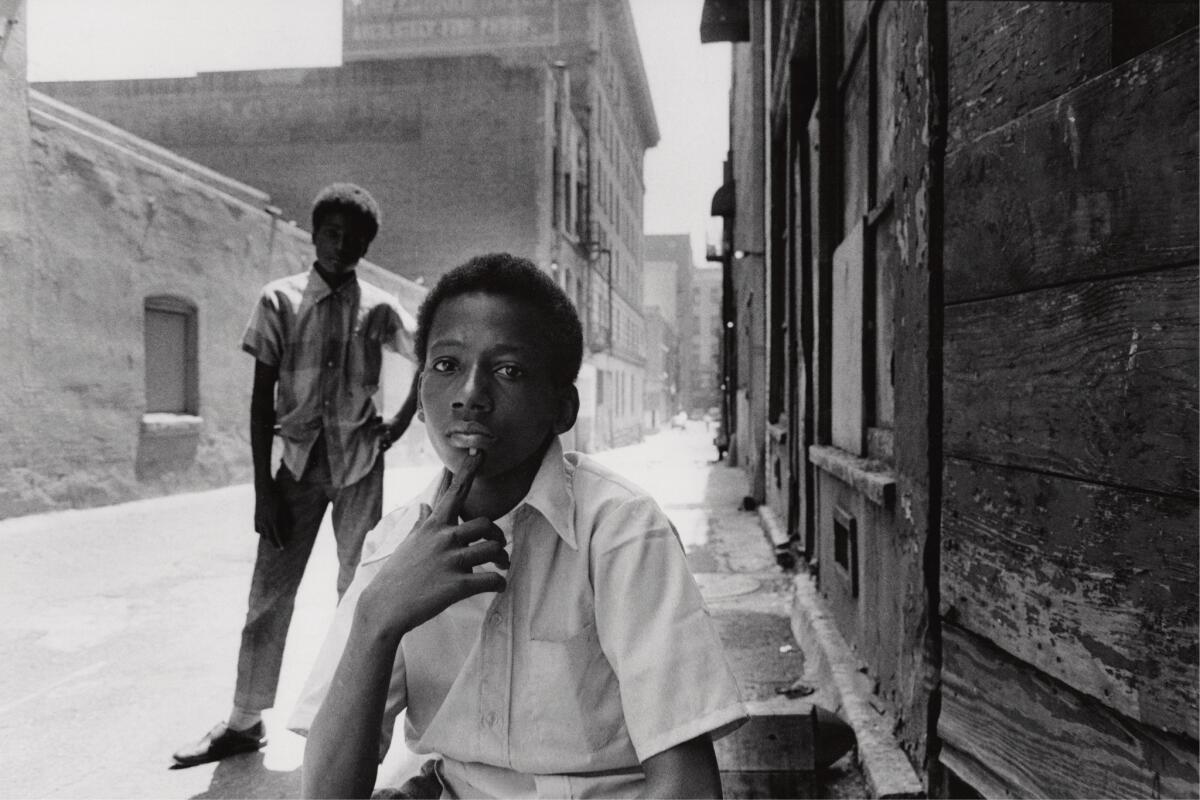
“This is in an alley downtown. These kids were shining shoes. I was working on a show called “America,” where we went back east and then came back all the way back across the country to get a feel for America. It was 1971. They needed photographs to fill in what America was like, so that’s what this is about.
“They were really nice kids. They are my idols — the people who are out there just trying to make it. The guy selling oranges or cotton candy, I really admire them. I think of my dad and how he struggled with his shoe shop. In this case, it’s just two kids out there living their lives.”
George Rodriguez
Hat & Beard Press: 187 pp, $65
“George Rodriguez: Double Vision”
Where: The Lodge, 1024 N. Western Ave., East Hollywood
When: Opens May 26 and runs through July 14
Info: thelodge.la
More on photography:
Look what happens when you interview artist and Instagram sensation Guadalupe Rosales via text image
UPDATES:
12:26 p.m.: A previous version of this story said that Rodriguez lives in Whittier. He lives in Pico Rivera.
The biggest entertainment stories
Get our big stories about Hollywood, film, television, music, arts, culture and more right in your inbox as soon as they publish.
You may occasionally receive promotional content from the Los Angeles Times.








